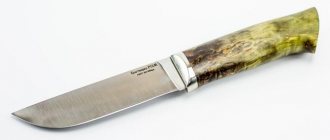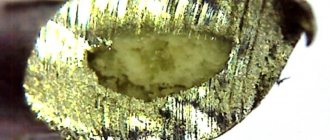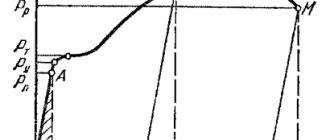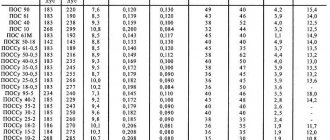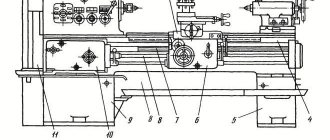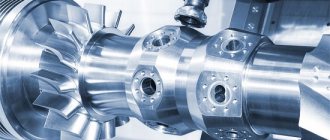Area of distribution and groups of welded materials
Thicknesses of control welded joints and areas of certification
| Materials | Thickness, t, mm | Distribution area |
| Become | t ≤ 3 | From t to 2 t* |
| 3 < t ≤ 12 | From 3 mm to 2t** | |
| t > 12 | From 5 mm and above | |
| Cast iron | 3 ≤ t ≥ 12 | From 3 to 2t |
| t ≥ 12 | From 5 mm and above | |
| Aluminum and its alloys | t ≤ 6 | From 0.7t to 2.5t |
| 6 < t ≤ 15 | 6 < t ≤ 40*** | |
| Copper and its alloys | t ≤ 3 | From 0.7t to 2.5t* |
| 3 < t ≤ 10 | From 3 mm to 2t** | |
| t > 10 | From 10 mm and above | |
| Titanium and titanium alloys | t ≤ 6 | From 0.7t to 2.5t |
| 6 < t ≤ 15 | 6 < t ≤ 40 | |
| Nickel and nickel alloys | t ≤ 3 | From t to 2t |
| 3 < t ≤ 12 | From 3mm to 2t | |
| t > 12 | From 5 mm and above |
* For gas welding: t up to 1.5t.
** For gas welding: from 3 mm to 1.5t.
*** For parts with a thickness of more than 40 mm, separate certification is required, which must be noted in the certification certificate and certification protocol.
Diameters of control welded joints when welding pipes and areas of certification
| Materials | Diameter, d, mm | Distribution area, mm |
| Become | d ≤ 25 | From d to 2 d |
| 25 < d ≤ 150 | From 0.5d (not less than 25 mm) to 2d | |
| d > 150 | From 0.5d and above | |
| Cast iron | d ≥ 100 | From 0.5d and above |
| Aluminum and its alloys | d ≤ 125 | From 0.5d to 2d |
| d > 125 | From 0.5d and above | |
| Copper and its alloys | d ≤ 125 | From 0.5d to 2d |
| d > 125 | From 0.5d and above | |
| Titanium and titanium alloys | d ≤ 125 | From 0.5d to 2d |
| d > 125 | From 0.5d and above | |
| Nickel and nickel alloys | d ≤ 25 | From d to 2d |
| 25 < d ≤ 150 | From 0.5d (not less than 25 mm) to 2d | |
| d > 150 | From 0.5d and above |
Note. d is the outer diameter of the pipe.
Scope of certification depending on the method of forming the root of the weld of the control welded joint
| Type of control welded joint | Distribution area | ||||
| Single-sided welding (os) | Double-sided welding (ds) | ||||
| lined (sp) | without lining (bp) | with stripping the root of the seam (zk) | without stripping the root of the seam (bz) | ||
| Single-sided welding (os) | lined (sp) | * | — | ´ | — |
| without lining (bp) | ´ | * | ´ | ´ | |
| Double-sided welding (ds) | with stripping the root of the seam (zk) | ´ | — | * | — |
| without stripping the root of the seam (bz): | ´ | — | ´ | * | |
Designations:
* Type of control welded joint;
´ Type of control welded joint to which the certification results apply;
— Type of control welded joint, which is not subject to certification results.
Scope of certification depending on the spatial position of the control welded joint during fusion welding
| Positions in which welding is performed | Distribution area | ||||||||||||||||||||
| Sheet | Pipe | ||||||||||||||||||||
| Butt joint | T-joint | Butt joint | T-joint | ||||||||||||||||||
| H1 | G | AT 2 | IN 1 | P1 | H1 | H2 | AT 2 | IN 1 | P2 | H1 | AT 2 | IN 1 | G | H45 | H2 | AT 2 | IN 1 | P2 | H45 | ||
| Butt joint of sheets | H1 | * | — | — | — | — | ´ | ´ | — | — | ´´ | — | — | — | — | ´ | — | — | — | — | |
| G | ´ | * | — | — | — | ´ | ´ | — | — | — | ´´ | — | — | ´´ | — | ´ | — | — | — | ||
| AT 2 | — | — | * | — | — | — | — | ´ | — | — | — | — | — | — | — | — | — | — | — | — | |
| B1 | ´ | — | — | * | — | ´ | ´ | — | ´ | — | ´´ | — | — | — | — | ´ | — | ´ | — | — | |
| P1 | ´ | ´ | — | ´ | * | ´ | ´ | — | ´ | ´ | ´´ | — | — | — | — | ´´ | — | ´´ | ´´ | — | |
| T-joint of sheets | H1 | — | — | — | — | — | * | — | — | — | — | — | — | — | — | — | — | — | — | — | — |
| H2 | — | — | — | — | — | ´ | * | — | — | — | — | — | — | — | — | ´ | — | — | — | ||
| AT 2 | — | — | — | — | — | — | — | * | — | — | — | — | — | — | — | — | — | — | — | — | |
| IN 1 | — | — | — | — | — | ´ | ´ | — | * | — | — | — | — | — | — | ´ | — | — | — | — | |
| P2 | — | — | — | — | — | ´ | * | — | ´ | * | — | — | — | — | — | ´ | — | — | ´ | — | |
| Butt joint of pipes | H1 | ´ | — | — | — | — | ´ | ´ | — | — | — | * | — | — | — | — | ´ | — | — | — | — |
| AT 2 | — | — | ´ | — | — | — | — | ´ | — | — | — | * | — | — | — | — | ´ | — | — | — | |
| IN 1 | ´ | ´ | — | ´ | ´ | ´ | ´ | — | ´ | ´ | ´ | — | * | — | — | ´ | — | ´ | ´ | — | |
| G | ´ | ´ | — | ´ | ´ | ´ | ´ | — | ´ | ´ | ´ | — | — | * | — | ´ | — | — | — | — | |
| H45 | ´ | ´ | ´´´ | ´ | ´ | ´ | ´ | ´´´ | ´ | ´ | ´ | ´´´ | ´ | ´ | * | ´ | ´´´ | ´ | ´ | ´ | |
| T-joint pipe + sheet | H2 | — | — | — | — | ´ | ´ | — | — | — | — | — | — | — | * | — | — | — | — | — | |
| AT 2 | — | — | — | — | — | — | ´ | — | — | — | — | — | — | — | * | — | — | — | — | ||
| IN 1 | — | — | — | — | — | ´ | ´ | — | ´ | ´ | — | — | — | — | — | ´ | — | * | ´ | — | |
| P2 | — | — | — | — | — | ´ | ´ | — | ´ | ´ | — | — | — | — | — | ´ | — | ´ | * | — | |
| H45 | — | — | ´´´ | — | — | ´ | ´ | ´´´ | ´ | ´ | — | ´´´ | — | — | — | ´ | ´´´ | ´ | ´ | * | |
Designations:
* Spatial position in which the control welded joint was welded;
´ The spatial position to which the certification applies;
´´ For pipe diameters greater than 150 mm;
— Spatial position to which certification does not apply;
´´´ Certification when welding a control welded joint made in position H45 using the “top-down” method applies only to position B2.
Scope of certification depending on the group of main materials of control welded joints
| Main material group | Distribution area | |||||||
| M01 | M02 | M03 | M04 | M05 | M07 | |||
| M01 | * | — | — | — | — | — | ||
| M02 | ´ | * | — | — | — | — | ||
| M03 | ´ | — | * | — | — | ´ | ||
| M04 | ´ | ´ | — | * | — | — | ||
| M05 | ´ | ´ | ´ | — | * | — | ||
| M07 | ´ | — | — | — | — | * | ||
| Aluminum and its alloys | M21 | M22 | M23 | |||||
| M21 | * | ´ | — | |||||
| M22 | ´ | * | — | |||||
| M23 | ´ | ´ | * | |||||
| Copper and its alloys | M31 | M32 | M33 | M34 | ||||
| M31 | * | — | ´ | ´ | ||||
| M32 | — | * | — | — | ||||
| M33 | — | — | * | ´ | ||||
| M34 | — | — | ´ | * | ||||
Designations:
* Material group of the control welded joint;
´ Group of material to which the certification result applies;
— A group of material that is not covered by the certification result.
Notes: 1. The grade of filler material in terms of chemical composition must correspond to the group of the base material of the control welded joint.
2. Certification for welding steels of group M07 in accordance with GOST 5781 and 10884 of a higher strength class applies to welding of steels of a lower strength class within group M07 for types of welded joints and welding methods in accordance with GOST 14098.
Groups of materials to be welded
| Group | Materials |
| M01 (W01) | Carbon and low-alloy structural steels of the pearlitic class with a yield strength of up to 360 MPa |
| M02 (W02) | Low-alloy, heat-resistant chrome-molybdenum and chrome-molybdenum-vanadium pearlitic steels |
| M03 (W03) | Low-alloy pearlitic structural steels with a yield strength over 360 MPa |
| M04 (W04) | High-alloy (high-chromium) steels of martensitic, martensitic-ferritic and ferritic classes with chromium content from 10% to 30% |
| M05 (W05) | Martensitic alloy steels with chromium content from 4% to 10% |
| M06 | Cast iron |
| M07 | Reinforcing steels of reinforced concrete structures. |
| M11 (W11) | High-alloy steels of austenitic-ferritic and austenitic classes |
| M21 (W21) | Pure aluminum and aluminum-manganese alloys |
| M22 (W22) | Non-heat-strengthened aluminum-magnesium alloys |
| M23 (W23) | Heat-strengthened aluminum alloys |
| M31 | Copper |
| M32 | Copper-zinc alloys |
| M33 | Copper-nickel alloys |
| M34 | Bronze |
| M41 | |
| M51 | Nickel and nickel alloys |
| M61 | Polyethylene (PE) |
| M62 | Cross-linked polyethylene (PE-X) |
| M63 | Polyvinyl chloride (PVC) |
| M64 | Polypropylene (PP) |
| M00 | Materials not included in the groups indicated above |
Notes to Table 1:
1. For cast aluminum alloys, the filler material must be the same as is established by regulatory documents for wrought alloys of the same group.
2.The group code according to the European classification is given in brackets
3. The use of other grades of steel, non-ferrous metals, alloys and polymer materials is allowed if there are instructions in regulatory documents. In this case, programs for practical and special examinations of welders must be developed by the Head Certification Centers and agreed upon with the State Technical Supervision Authority of Russia. The M00 group and grade of material are indicated in the protocol and certification certificate.
Groups of typical grades of basic materials
| Group Materials | Material grades |
| M01 (W01) | St2kp, St2ps, St2sp, St3kp, St3ps, St3sp, St3Gps, St3Gsp, St4kp, St4ps, St4sp, 08, 08T, 08GT, 10, 15, 15G, 18, 18G, 20, 20G, 25.15K, 16K, 18K, 20K, 22K, 15L, 20L, 25L, 20YuCh, A, V, 09G2, 10G2, 14G2, 16GMYUCH, 12GS,12GSB,12G2S,13GS, 13GS-U, 15GS, 16GS, 17GS, 17G1S, 17G1S-U, 20GSL, 20GML, 08GBYu, 09G2S, 09G2SA, 09G2S-Sh, 10G2S, 10G2S1, 10G2S1D, 14HGS, 09G2SYuCh , 09ХГ2СУЧ, 09ХГ2NAБЧ, 07ГФБ-У, 15ХСНД, 14GNMA, 16GNMA, 10GN2MFA, 10GN2MFAL, 15GNMFA, shipbuilding steel categories A32, D32, E32, pipe steels of strength classes K50, K52, K54. |
| M02 (W02) | 12МХ, 12ХМ, 15ХМ, 20ХМ, 20ХМА, 20ХМЛ, 10Х2М, 10Х2М-ВД, 20Х2МА, 1Х2М1, 12Х2М1, 10Х2М1А, 10Х2М1А-А, 10Х2М1А-VD, 10Х2М1А-Ш, 12Х1 MF, 15Kh1M1F, 20KhMFL, 15Kh1M1FL, 12Kh2MFSR, 12Kh2MFB, 12X2MFA, 15X2MFA, 15X2MFA-A, 15X2NMFA, 15X2NMFA-A. |
| M03 (W03) | 13G1SB-U,13G2AF, 14G2AF, 15G2AFD, 16G2AF, 18G2AF, 09GBYu, 09G2FB,10G2F,10G2FB,10G2SFB,10G2FBU,09G2BT, 10G2BT, 15G2SF, 12G2SM F, 12G2SB, 12G2SB-U, 12GN2MFAYU, D40, E40, 10HSND, 10HN1M, 12ХН2, 12ХН3А,10Х2ГНМ, 10Х2ГНМА-А, 30ХМА, 18Х2МFA, 25Х2МFA, 12Х2Н4А, 18Х3МВ, 20Х3МВФ, 25Х3МФА, 15Х3НМВА, 15Х3НМFA-А, 20ХН3Л, 30ХGSA , 38HN3MFA, shipbuilding steel categories A36, D36, E36, A40, D40, E40, pipe steels of strength classes K55-K60, X60, X65, X70. |
| M04 (W04) | 20Х13, 08Х14МФ, 20Х17Н2, 12Х13, 12Х11В2МФ (1Х12В2МФ), 08Х13, 08Х17Т, 15Х25, 15Х25Т, 15Х28, 05Х12Н2М, 06Х12Н3ДЛ, 07Х16Н4Б. |
| M05 (W05) | 15Х5, 15Х5М, 15Х5М-У, 15Х5ВФ, Х8, 12Х8, 12Х8ВФ, Х9М, 20Х5МЛ, 20Х5ВЛ, 20Х5ТЛ, 20Х8ВЛ. |
| M06 | SCh10, SCh15, SCh17, SCh20, SCh25, SCh30, SCh35, SCh15M4, SCh17M3, ChNHT, ChN1MSh, ChN2X, KCh30-6, KCh33-8, KCh35-10, KCh37-12, KCh45-7, KCh50-5, KCh55-4, KCh60-3, KCh65-3, KCh70-2, KCh80-1, 5, HF-35, HF-40, HF-45, HF-50, HF-60, HF-70, HF-80, HF-100. |
| M07 | 18G2S, 10GT, 25G2S, 32G2Rps, 80S, 20HG2Ts, 23H2G2T, 22H2G2AYU, 22H2G2R, 20H2G2SR, 27GS, 20GS, 28S, St 5ps, St 5sp, 35GS. |
| M11 (W11) | 12Х21Н5Т, 07Х16Н6, 08Х22Н6Т, 08Х21Н6М2Т, 08Х18Г8Н2Т 10Х21Н6М2Л, 07Х13АГ20, 07Х13Н4AG20, 10Х14Г14Н4Т, 03Х17Н14М3, 08Х17Н13М2Т, 10Х17Н13М3Т, 10Х17Н13М2Т, 08Х17Н15М3Т, 12Х18Н9Т, 03Х16Н9М2, 08Х16Н9М2, 08Х16Н11М3, 08Х18Н9, 09Х19Н9, 10Х18Н9, 12Х18Н9, 04Х18 Н10, 08Х18Н10, 06Х18Н10Т, 08Х18Н10Т . Н12М3ТЛ, 10Х18Н9Л, 20Х18Н9ТЛ, 12Х18Н9ТЛ, 12Х18Н12М3ТЛ. |
| M21 (W21) | AD0, AD00, AD1, A5, A6, A7, A8, A85, A97, A99, AMts. |
| M22 (W22) | AMg1, AMg2, AMg3, AMg4, AMg5, AMg6. |
| M23 (W23) | D20, AD31, AB, V95, V96, VAD-23. |
| M31 | M1, M2, M3, M1r, M2r, M3r. |
| M32 | L60, L63, L68,L90, LS59-1, LO62-1, LO70-1, LMts58-2, LZhMts59-1-1, LAN59-3-2, LN65-5, LA77-2, LK80-3. |
| M33 | MNZh5-1, BS-3s, MNZhMts30-1-1, NZhMts28-2.5-1.5. |
| M34 | BrKh1, BrKMts3-1, BrAMtsZhN8-10-3-2, BrAMts9-2, BrAZHNMts7-2,5-1,5-9, BrAZH9-4, BrAZHNMts9-4-4-1, BrAZhMts10-3-1.5, BrANZh7-4-2, BrANMtsZh8.5-4-4-1.5, BrOTs8-4, BrOTs10-2, BrOF6.5-0.15, BrOF8-0.3. |
| M41 | VTI–0, VTI–00, VT3-1, VT4, VT-5, VT5-1, VT-6, VT-8, VT-14, VT-16, VT20, VT22, VT-28, PT–IM, PT-3V, PT-7M, OT4, OT4-0, OT4-1, AT2. |
| M51 | KhN77TYu, KhN70VMTYu, KhN67VMTYu, KhN65MV, KhN65MVU, KhN78T, KhN63MB, KhN70MF-VI, KhN60MYUVT, KhN75MVTYu, KhN65VYUT, Kh20N80, Kh15N60. |
| M61 | PE80, PE100. |
| M62 | Cross-linked polyethylene (PE-X). |
| M63 | Polyvinyl chloride (PVC). |
| M64 | Polypropylene (PP). |
| M00 | Materials not included in the groups indicated above. |
Flow Estimate
To minimize production costs when welding workpieces, it is important to calculate the costs of the material used for certain purposes.
It is also important that for the latter option it is better to have in your personal storage the necessary supply of electrodes of different brands, various fluxes, welding wire and inert gases. Interesting to read: Do-it-yourself repair of a welding inverter Resanta 220 The approximate calculation of the required amount of welding consumables is based on the working standards for their use, taking into account the characteristics of one or another type of welding.
The rate of use is understood as a quantitative indicator by which one can judge the intensity of consumption of these materials, taking into account probable non-production losses (rejection) and waste. This indicator includes costs at the stage of preliminary and main work, as well as costs associated with eliminating defects.
Consumption rationing involves taking into account each type of weld and methods of welding metals separately and evaluating them based on the belief of saving material.
With all this, the inevitable losses in any welding process are certainly taken into account, which are also usually standardized depending on the welding criteria and the complexity of the structure being processed.
Specialists use well-known formulas to calculate the required volume of auxiliary materials, which allow them to roughly estimate the value of this indicator.
According to these calculations, the indicator of the costs of materials used in welding is taken to be their costs per unit length of the weld. In addition, the formulas take into account properties such as cross-sectional area and specific gravity of the alloy being processed.
Application of oxygen
Oxygen is heavier than air, it promotes the combustion of gases and vapors at high speed, which releases heat and reaches a high melting point. The interaction of compressed oxygen with fatty oils and lubricants leads to spontaneous ignition and explosion, so work with oxygen cylinders is carried out in clean conditions, without the danger of such contamination. Storage of oxygen-type welding materials is carried out in compliance with fire safety standards.
Oxygen for welding is technical, obtained from the atmosphere. The air is processed in special separation devices, carbon dioxide impurities are removed, and the final product is dried. Liquid oxygen for transportation and storage requires special containers with increased thermal insulation.
Non-consumable welding rods and electrodes for machine welding
To connect surfaces in shielding gases, special welding materials are used. The definition of such welding is given as a process that uses an electric arc between an electrode and a surface as a heat source. Round tungsten electrodes with a diameter of 5-10 mm supply electric current to the arc area. Pure tungsten is used as a material or additives of lanthanum, yttrium, and sodium dioxide oxides are added. Tungsten itself cannot be replaced with a cheaper metal, since it is the most refractory, with a high boiling point (5900 ºC) and is used for welding with direct and alternating current.
Storage rules
In addition to taking into account the consumption of welding materials, you should worry about their reliable safety in warehouse conditions. According to the annotation under the designation RD 34.10.124-94 in the warehouse criteria, they must be contained in the original packaging and divided into varieties and brands of individual items.
The storage facility (pantry) itself must be located in a closed room specially equipped for this purpose. Electrodes with additional coating, which have undergone preparatory calcination, are stored either in special drying cabinets or in rigid containers with a lid with a seal (at a temperature not lower than +15 degrees).
Fluxes, which have also been calcined, are stored in the same conditions and in the same cabinets as coated electrodes (in some cases they can be stored on special stainless steel trays).
Please note that flux-cored wire used in argon arc welding must also be sent for storage only after preparatory calcination.
The shelf life of all of the above consumables when kept in drying cabinets, thermal cases or other sealed containers is usually unlimited.
In case of storage in open places in storerooms, this period is limited and for electrodes and flux is no more than 15 days. For flux-cored wire and melting products used in welding pearlitic steel, it cannot exceed 5 days.
In storage areas for welding materials, for the convenience of the welder and maintenance personnel, there must be special information signs with data on the main parameters of the products (their brand, quantity, batch number, etc.).
To sum up everything that has been said, we note that a competent approach to the selection, use and storage of consumables is the key to successful welding work. Only by taking this fundamental factor into account is it possible to achieve the required properties and reliability of finished welded products.
Use of acetylene
Acetylene is a compound of oxygen and hydrogen. This flammable gas is in a gaseous state at normal temperatures. The colorless gas contains impurities of ammonia and hydrogen sulfide. The flammable component of the material is dangerous. Welding pressure of more than 1.5 kgf/cm2 or accelerated heating to 400 ºС is enough to cause an explosion. Gas is produced by an electric arc discharge, which promotes the separation of liquid flammable components or by the decomposition of calcium carbide under the influence of moisture.
